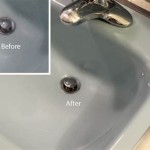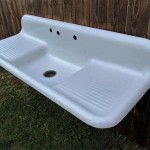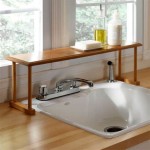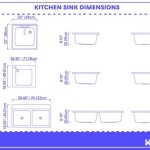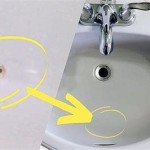Under The Sink Trash Cans With Lids: A Comprehensive Guide
Under-the-sink trash cans with lids offer a convenient and hygienic solution for kitchen waste management. Tucked away discreetly, they keep unpleasant odors and unsightly refuse out of sight while maximizing limited kitchen space. This article will explore various aspects of these essential kitchen tools, including materials, sizes, features, and selection considerations.
Materials and Durability
Under-the-sink trash cans are manufactured from a variety of materials, each with its own advantages and disadvantages. Common materials include:
Plastic: Plastic is a popular choice due to its affordability, lightweight nature, and resistance to rust and corrosion. High-density polyethylene (HDPE) is often preferred for its durability and resistance to cracking. However, some plastics can become brittle over time, especially with exposure to extreme temperatures.
Stainless Steel: Stainless steel offers a sleek, modern appearance and exceptional durability. It is resistant to rust, dents, and scratches, making it a long-lasting option. Stainless steel cans tend to be more expensive than plastic alternatives but are often worth the investment for their durability and aesthetic appeal.
Metal with Enamel Coating: Metal cans with enamel coatings provide a balance between affordability and durability. The enamel coating protects the underlying metal from rust and adds a layer of visual appeal. However, the coating can chip over time, exposing the metal underneath to potential damage.
Sizes and Capacity
Selecting the appropriate size is crucial for maximizing space efficiency and minimizing the frequency of emptying. Consider the available space under the sink and the household's waste production when determining the ideal capacity. Common sizes range from small, 2-gallon containers suitable for single households to larger, 10-gallon or even dual-compartment options for larger families or those who prioritize recycling.
Lid Mechanisms and Functionality
The lid mechanism plays a significant role in odor control and ease of use. Various lid styles are available, each offering different benefits:
Swing Lids: Traditional swing lids are simple and reliable. They offer easy access for disposing of waste but may require more clearance space when opened.
Flip Lids: Flip lids require less clearance space than swing lids and can be opened with a single hand. They often feature a smaller opening, which can be beneficial for containing odors.
Step-On Lids: Step-on lids provide a hands-free operation, promoting hygiene and convenience. They are especially useful when hands are full or dirty. However, the pedal mechanism can sometimes be prone to malfunctioning.
Motion Sensor Lids: Motion sensor lids offer the ultimate in hands-free operation. They open automatically when motion is detected, providing a hygienic and convenient disposal solution. However, they require batteries and may be more expensive than other lid styles.
Features and Considerations
Beyond the basic materials and lid mechanisms, several additional features can enhance the functionality and convenience of an under-the-sink trash can:
Removable Liners: Removable liners make emptying and cleaning the can easier. Some models even feature integrated liner retaining rings or clips to keep the liner securely in place.
Soft-Close Lids: Soft-close lids prevent slamming and minimize noise, creating a more pleasant user experience.
Handles and Wheels: Handles and wheels can facilitate moving the can for cleaning or emptying, particularly for larger, heavier models.
Compartments and Recycling Options: Dual-compartment cans allow for convenient separation of recyclable materials. Some models even feature multiple compartments for composting or other waste streams.
Installation and Placement
Proper installation and placement are essential for maximizing the effectiveness of an under-the-sink trash can. Measure the available space carefully before purchasing to ensure a proper fit. Consider the location of plumbing pipes and other obstacles. Some models are designed to be mounted on the inside of the cabinet door for even greater space efficiency.
Cleaning and Maintenance
Regular cleaning is vital for maintaining hygiene and preventing unpleasant odors. Empty the can frequently and wipe it down with a disinfectant cleaner. For removable liners, wash them regularly or replace them as needed.
Selecting the right under-the-sink trash can involves careful consideration of materials, size, lid mechanism, and additional features. By assessing individual needs and preferences, consumers can choose a model that optimizes space, enhances hygiene, and simplifies waste management in the kitchen.

Sterilite 1003 Under Sink Wastebasket White 10038006
8 5 12l Kitchen Trash Can With Lid Wall Mounted Hanging Bin Garbage For Cabinet Under Sink Waste Compost

How To Install A Trash Pull Out Under Your Sink The Palette Muse

Pull Out Trash Can Under Cabinet Sink

Under The Sink 2025 Garbage

Trash Can With Lid Pivot Out Kv By Hafele Advance Design Technologies Inc

Closetmaid 6 Gal White Pull Out Trash Can 3103 The Home

Kitchen Garbage Bin Lid Compost Sealed In Temu

Sterilite 1003 Under Sink Wastebasket White 10038006

What Size Trash Can For Kitchen Is Best Plastic Place Plasticplace Bags Home And Business
